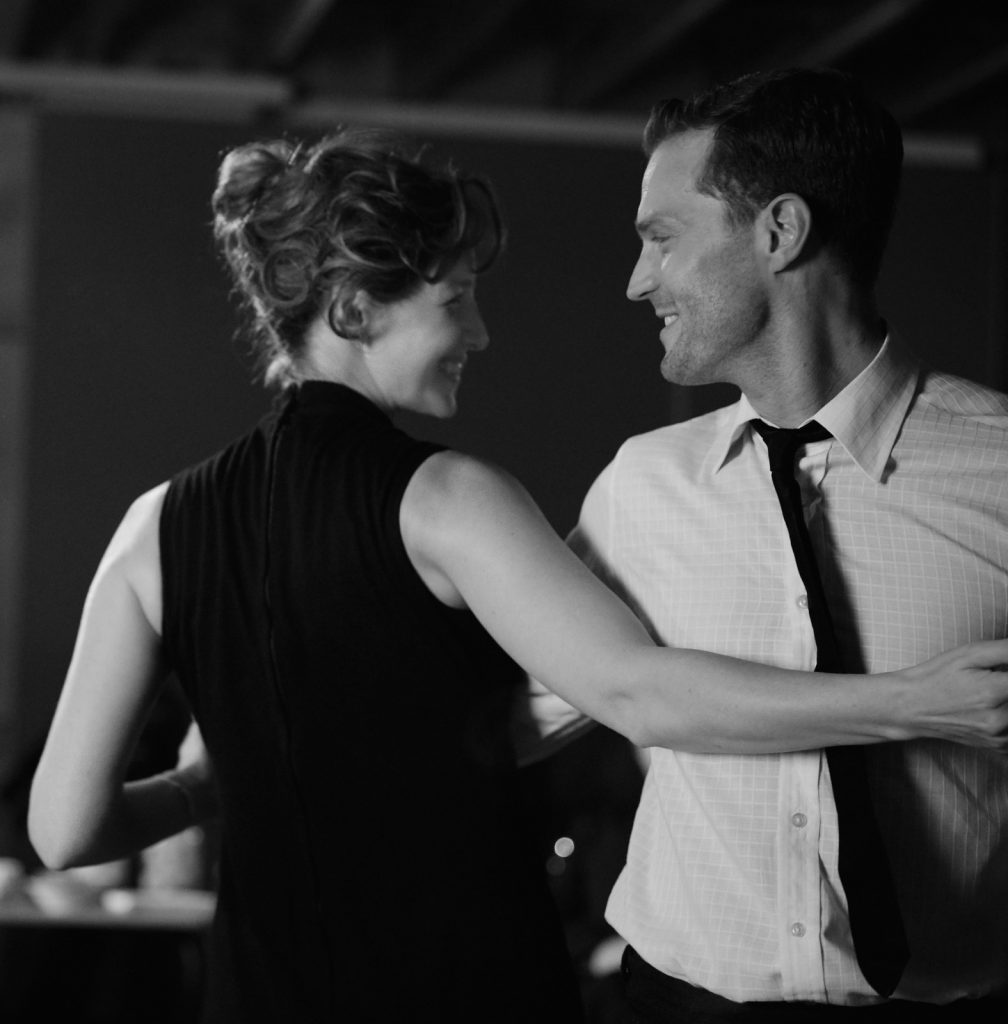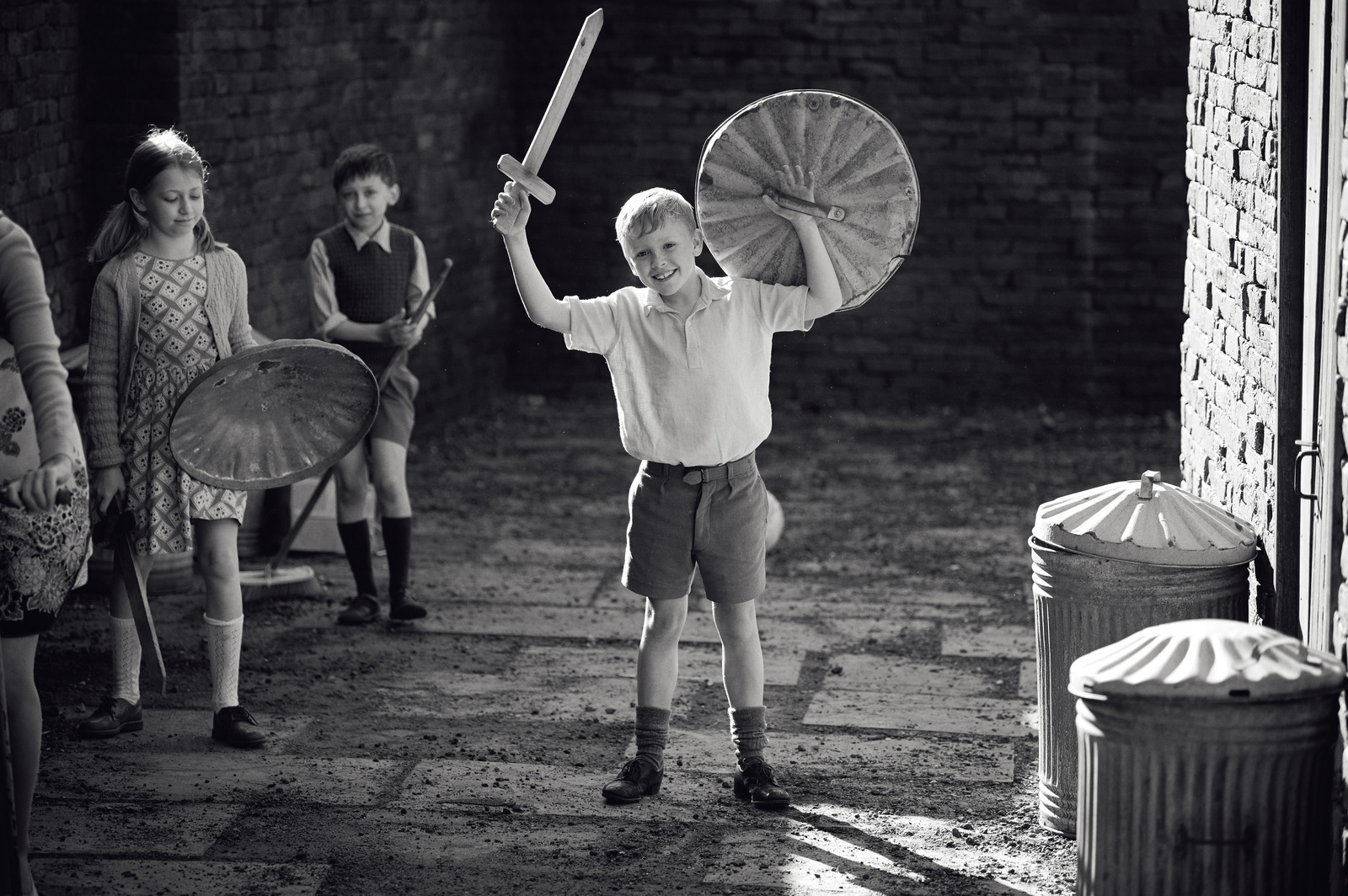Shot in glorious black and white, Belfast is a wee tale of a working-class family during the “Little Troubles” era in 1969 told through the eyes of Buddy (Jude Hill), a wide-eyed, nine-year old boy. We caught up with writer/producer Kenneth Branagh (Hamlet, Much Ado About Nothing) who spoke about making his highly personal film about his birthplace.
“I started writing this without a prominent concern about directing it.” He was unsure if it would or could be made. Branagh showed the completed draft to his siblings for approval since many elements were based on their family. “I listened to my first instincts about what I wanted to write first rather than what I wanted to direct.”
We asked Branagh about the importance of the opening scenes to maximise audience impact. “Belfast opens in color in present day Belfast letting people see the legacy of this industrial city.” When Branagh was a child he always considered Belfast to be a village city with its defined industrial areas. Today, Belfast is a modernized city which retains the charm of its industrial past.
Then, the audience is transported back to 1969 in black and white and we meet Buddy being greeted by the village folk as he’s fighting imaginary dragons. These opening scenes are scored by the patron music saint of Belfast, Van Morrison, with a new song Down To Joy. The song is upbeat and melodic and captures the optimistic mood à la “A Beautiful Day In The Neighborhood.” “The opening rapidly sets up the story of a functioning social ecosystem as Buddy is summoned home for his tea [dinner]. It takes a village to raise a child and Buddy is the center of that village.”

Kenneth Branagh
“We were trying to lay out the current history, the pre-history, then the piece of history we were going to focus on,” continued Branagh. This terrain was economically and efficiently captured in five pages of screenplay.
Within minutes, this peaceful village equilibrium is upended by violence by the Irish Republican Army (IRA). This was a sledgehammer to the seemingly harmonious village life in Belfast. “The bomb was a savage hammer blow to it.”
Van Morrison was chosen to score the film because is an ambassador for Belfast. “He has an understanding of what it’s like to grow up there, leave, and return.” Van Morrison describes himself as a “corner boy” brought up on the street corners of Belfast. “There is a spiritual mood and introspection in the music borne out of his global travels. He captures a gritty, Irish melancholy layered beneath the joviality. There is a beauty to the melancholy.”
Kenneth Branagh was born in Belfast at left at age nine (non-coincidentally the same age as Buddy). He was careful not to romanticize some idyllic version Belfast, but rather focus on his lived experience and memories. “I had nine years of formative development in a large extended family (dozens of them) in Belfast.”
The Irish are well-known for their propensity to leave the Emerald Isle – as did Branagh. But those formative years left a lasting impression on him. He quoted the adage, “Give me the child until seven and I’ll show you the adult.” The impact of his environment, the enjoyment, and the way people behaved and spoke was strongly branded in his psyche. “The sound of the city also stayed with me… the ice cream vans… the trains, the constant boat horns,” he reminisced.
Branagh not only wanted to celebrate Ireland, but also, “The ability of the Irish to laugh in the face of adversity.” Many people were poor and cherished the small pleasures to bring them joy. “Any chance of adhoc entertainment – laughter, dancing, singing, music, poetry, or the latest gossip… was our entertainment. Life on the street really imprinted itself on me.”
“You also had to represent your family well in Belfast… and avoid the cardinal sin of thinking you were above others.”
Belfast Is A Character
According to Branagh, Belfast is a state of mind. “It’s symbolic of the idea of home which is part of the Irish DNA.” Despite being spiritually welded to the Emerald Isle, most Irish will inevitable leave at any opportunity. “It’s primacy as your formative home will never diminish.”
“Belfast is a muscular town with masculine architecture, but also coupled with poetry and a softer, creative look at life. It was commerce and the arts smashing up against each other.”
Belfast also nods to the religious factions – the puritanical north pitted against the more liberal south. The film features a Protestant Minster (Turlough Convery) who preaches that “life is something through which you must joylessly travail in order to avoid hell, and possibly go to heaven.” In contrast the Catholics received a refreshing beverage and a snack during their services. They can worry about the afterlife later.

Ma (Caitriona Balfe) & Pa (Jamie Dornan) Photo by Rob Youngson / Focus Features
Buddy took the religious differences in Belfast in his stride. It was treated with humor and levity, so long as he avoided confession booths. “It was viewed with comic bemusement, but no condemnation by either side.”
The “Troubles” ensured that Protestants and Catholics couldn’t always enjoy a peaceful coexistence. “There was a tension between the upright quality of the North and the ‘let your hair down’ quality of the South. It was a wild, lunatic atmosphere, but it was very electric.”
Let’s Talk Politics
The IRA was highly active during the 60s and 70s. Violence and explosions become part of life for the people of Belfast. It became tolerated and accepted, but it was also traumatic. “People lived in a heightened state of alertness.” The politics in Belfast was expressed through the eyes of Buddy in the film. “He witnessed the insidious recruitment in his own streets.” Innocuous tasks (wee message) like stealing or causing damage to the adversary were commonplace. “A nine year old experiences the introduction at the lower echelons of the IRA… a slow slide into the intrigue of it before full recruitment.”
Belfast has a sweet nature as the audience lives vicariously through the eyes of a nine-year old wondering if he’ll marry the girl of his dreams (even though she’s a Catholic). Buddy may even have to change religions.
Branagh describes the tone of the film as “a heightened realism, although some scenes are naturalistic. Buddy’s imagination is only lit up by the movies and the drama and the high stakes of the revolution that turns his street into a war zone.” There are scenes in Belfast where the street is sealed off and residents must sign in and out to gain access. These are deeply distressing, but a harsh reminder of the reality of the place. “Buddy needs to find a way to tell himself stories as a coping mechanism.”
There is a also rich mixture of tones from high drama to sweetness. The sense of loss is compensated through the arts as demonstrated by a heart-melting rendition of the Robert Knight crowd-pleaser, Everlasting Love sung by Pa (Jamie Dorman).
We shall not cease from exploration and the end of all our exploring will be to arrive where we started and know the place for the first time – T.S. Eliot
Apart from exploring the political turmoil in Belfast, the film explores potent themes of leaving, returning one day, and getting lost along the way. Branagh had this quote from T.S. Eliot above his desk as he wrote his screenplay. Another source of creative inspiration was the quote by spiritual teacher Ram Dass, “We’re all walking each other home.”
In essence, the sixty-year old Kenneth was metaphorically walking his nine-year self back to Belfast. “I felt that in leaving Belfast, I lost some of what that boy was. Making Belfast was in part a process of discovering this boy and bringing him back home.“
